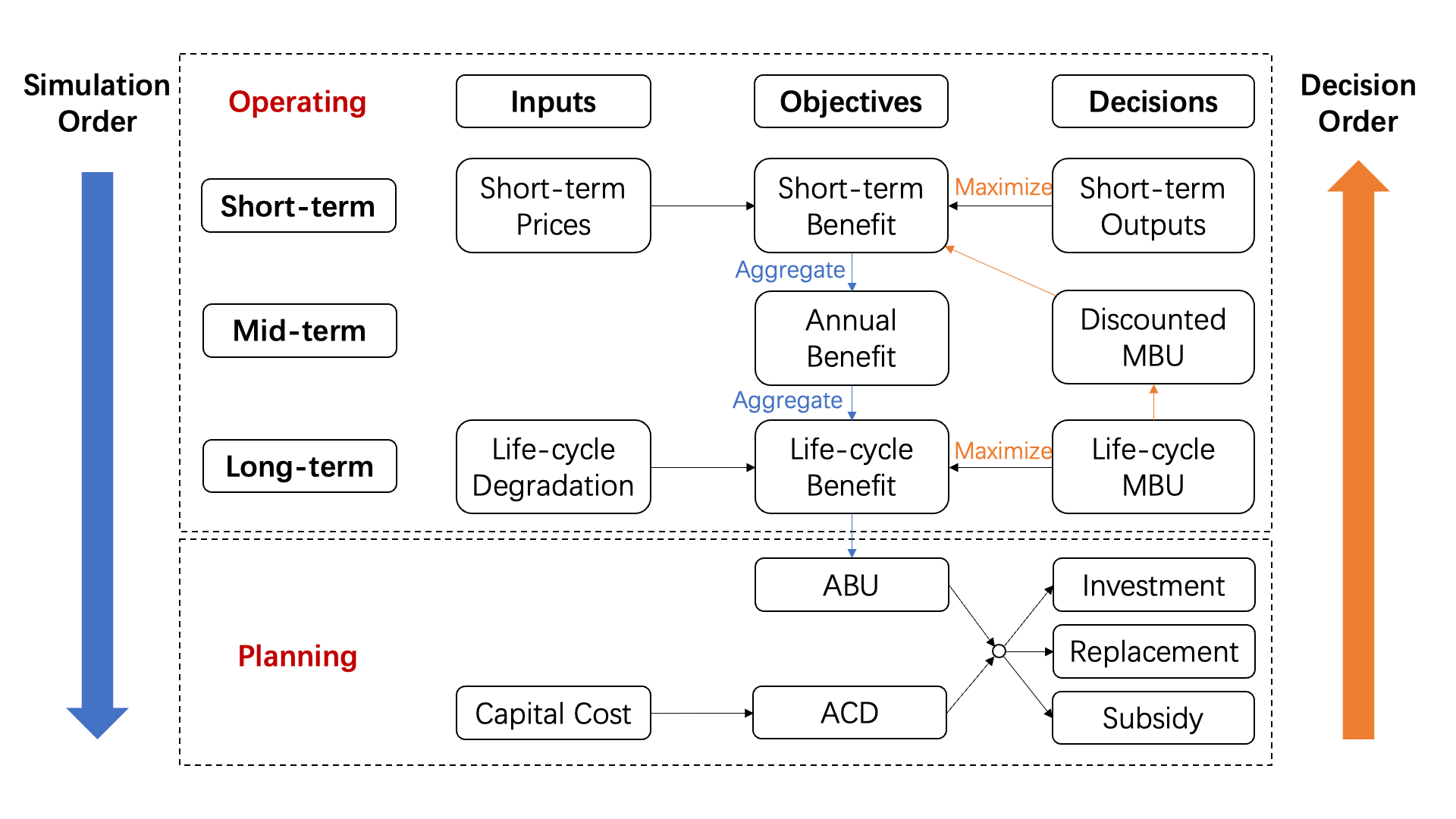In the short term, typically day-ahead horizon, the EES operator determines the optimal daily outputs to maximize the daily benefits, based on the forecasted day-ahead hourly market prices and the discounted MBU determined in the mid-term.
For the mid-term, typically a time frame between a month and a year, the EES operator calculates the discounted MBU as the product of a discounting factor and the life-cycle MBU.
For the long term, the EES operator determines the optimal life-cycle MBU to maximize the life-cycle benefit, subject to EES degradation constraints over the EES life. The life-cycle MBU feeds into the mid-term calculation of the discounted MBU.
For the planning stage, we calculate ABU and ACD given the life-cycle benefit and the capital cost. Then we can inform investment decisions and subsidy policies by comparing the ABU with the ACD.
This research developed an intertemporal framework that incorporates incremental EES degradation in both operating and planning problems and is generally applicable to most EES applications and chemistries that exhibit degradation as a function of use or time. We propose two metrics for operating and planning, namely the marginal benefit of usage (MBU) and the average benefit of usage (ABU). For operating decisions, we present how MBU should be determined and implemented through short- to long-term timescales to maximize the total life-cycle benefit of EES within the life-cycle degradation limit. Specifically, the MBU brings long-term information to short-term decisions and is proved to guarantee that the life-cycle benefit is maximized when short-term decisions are made. For planning and valuation, we present how ABU can be utilized to assess the economics of different EES applications and to estimate the required subsidies to make EES economically viable.

